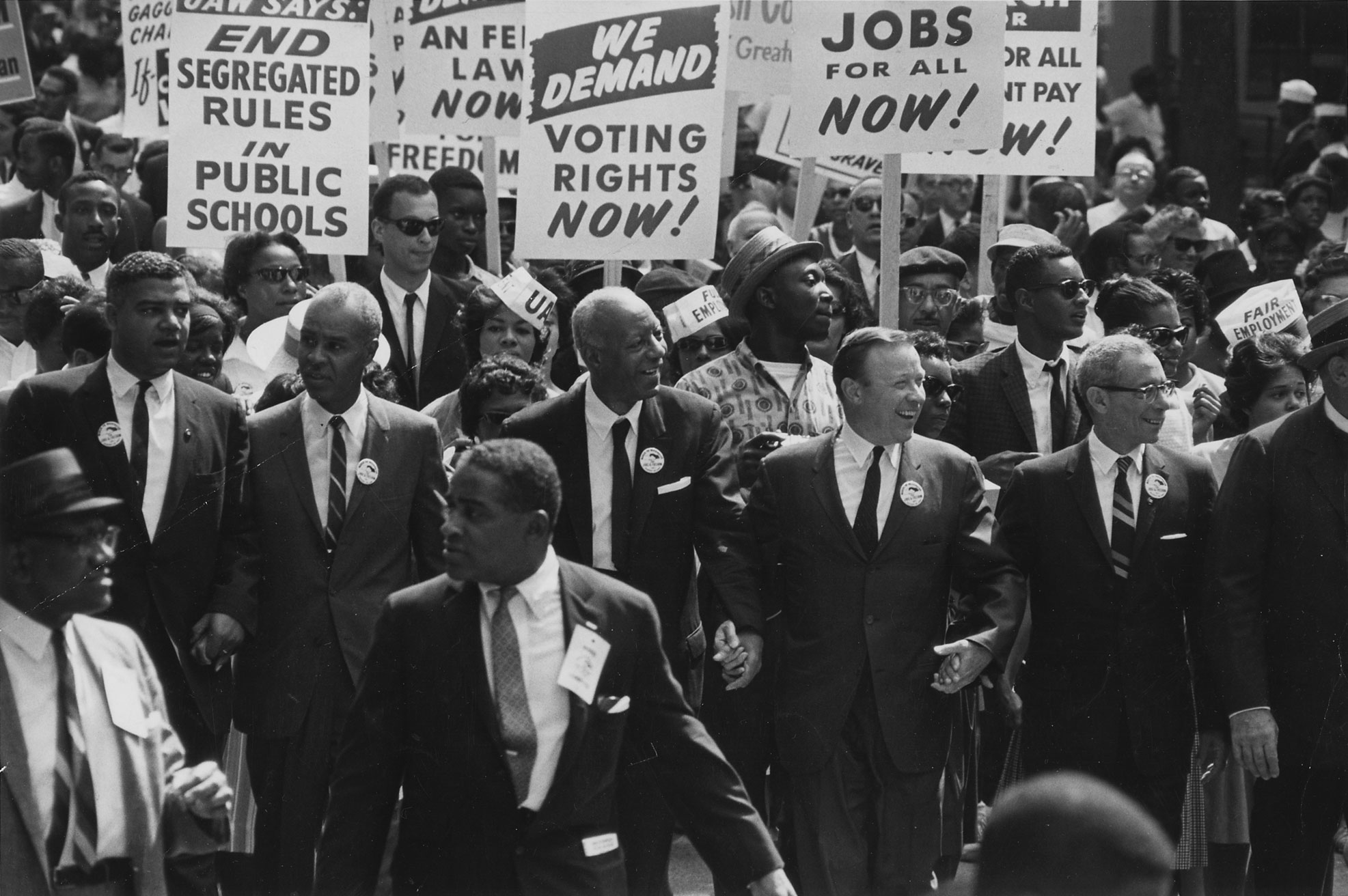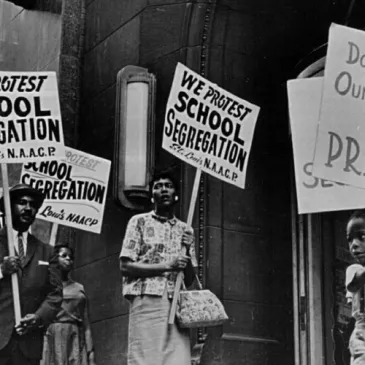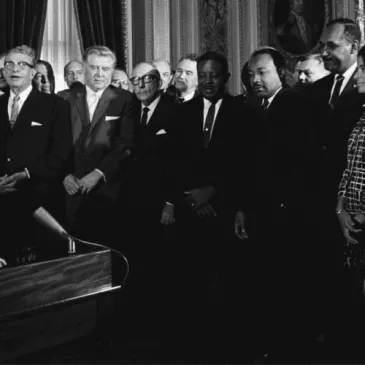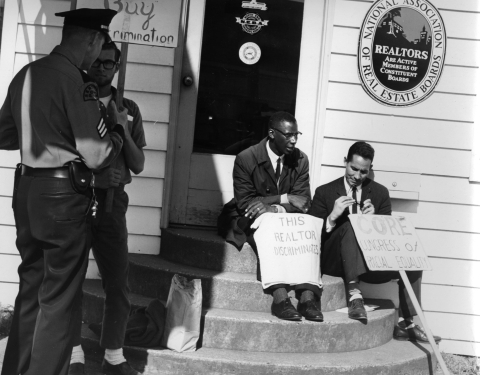
Rowland Scherman for USIA, Photographer. Courtesy of U.S. National Archives and Records Administration.
Leaders marching from the Washington Monument to the Lincoln Memorial in Washington, DC, August 23, 1963. In the front row, from left are: Whitney M. Young, Jr., Executive Director of the National Urban League; Roy Wilkins, Executive Secretary of the NAACP; A. Philip Randolph, Brotherhood of Sleeping Car Porters, American Federation of Labor (AFL), and a former vice president of the American Federation of Labor and Congress of Industrial Organizations (AFL-CIO); Walter P. Reuther, President, United Auto Workers Union; Arnold Aronson, Secretary of the Leadership Conference on Civil Rights.

















